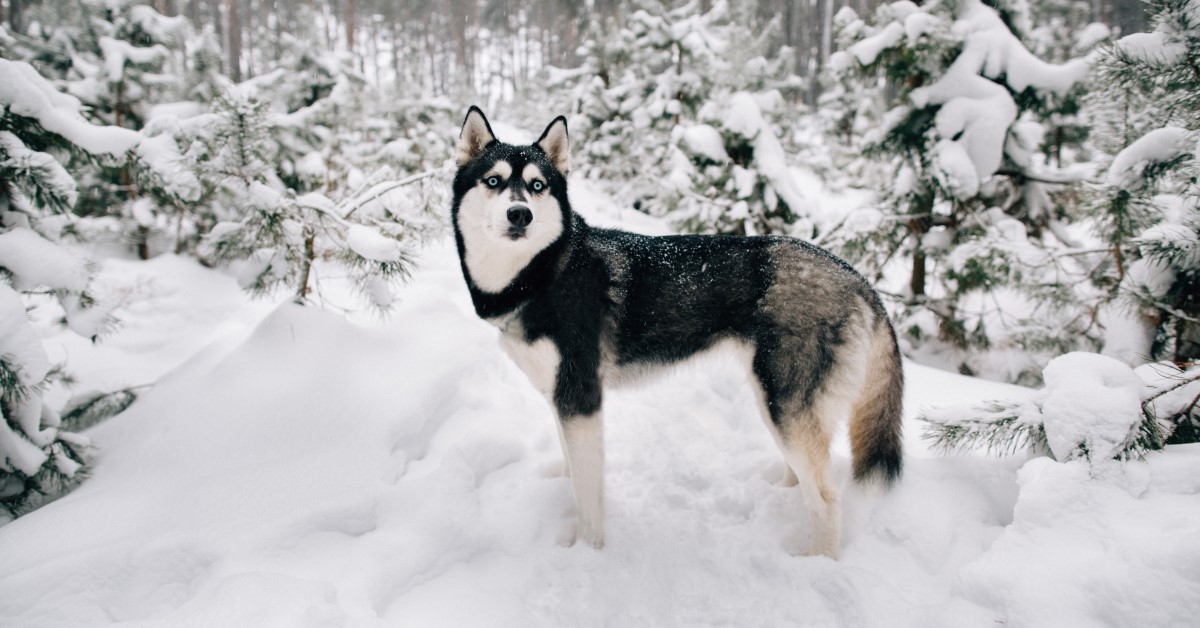Siberian Husky: An Energetic, Enthusiastic Companion Dog
The Siberian Husky can be a handful, but it also makes a hardy, happy companion with the proper care.

If you've ever witnessed a dog sled team in action, you probably know a Siberian Husky when you see one. Despite their somewhat wolf-like appearance, these animals are genuine domestic dogs bred for high-energy work. They also make sturdy, delightful family companions -- but only if you know to care for them properly. Take a look at some crucial information about this striking, distinctive breed, from its history and characteristics to its dietary, exercise, and healthcare needs.
History of the Siberian Husky
As you've probably guessed, the Siberian Husky traces its ancestry to ancient Siberia, with the breed possibly going back in time as far as 4,000 years. The Churchi tribe of Siberia bred this dog for everyday chores and as a family companion, a combination that the breed excels at to this day.
Huskies won their reputation as amazing sled dogs after Alaskans started importing and breeding them to win sled-team races. Beyond the fun and games, their sled-moving skills proved critical when relays of sled teams were required to transport life-saving medicines to Nome alaska during an outbreak of diphtheria in 1925.
Siberian Husky Appearance
As noted above, the Siberian Husky's physical traits bear some similarities to those of wolves. Their ears stand erect; they sport double-coats of white, gray, tan and/or black fur; and they have distinctive blue eyes. (Some Huskies, however, may have one blue eye and one brown eye, a trait called heterochromia iridis.)
Siberian Huskies typically grow to a height of 20 inches or so, with healthy adults weighing anywhere from 35 to 60 pounds. Males tend to get slightly taller and heavier than females.
Siberian Husky Personality and Training
You'll notice pretty quickly that your Siberian Husky exhibits boundless energy and a fun-loving personality. These dogs are highly sociable and thrive in the company of humans and other dogs. They're so outgoing and friendly, in fact, that they don't make the most effective watchdogs; they'd rather play with a burglar than chase him away. Siberian Huskies have a reputation as "vocal" dogs who like to express themselves through barks, howls, and other noises, a point you might want to keep in mind if you're shopping for a quiet companion.
Siberian Huskies are moderately easy to train. While they respond well to patient repetition (and motivations such as treats), their independent side can make them seem a bit stubborn and wayward at times. Leash training is critical because this breed likes to chase other animals.
Siberian Husky Diet and Exercise
Like all working dogs, Huskies burn a lot of calories and need a balanced, nutritious, generous diet. Even so, you should follow your vet's instructions on feedings, giving your Husky the right amount of food for its stage of life to avoid obesity.
Siberian Huskies enjoy kibble, wet food, or any combination of the two. They also do well on raw foods such as fish, lamb, beef, chicken, and even vegetables. However, you should only feed your Husky either commercial food or raw food at any given meal, since each type of food has a different effect on the digestive system.
Don't give your Husky a meal right before or right after exercise sessions. Eating too soon before or after activity increases the risk for gastric dilatation volvulus, a dangerous twisting of the stomach.
Huskies require at least two hours of exercise per day, not only to release pent-up energy but also to ensure that they actually burn all those calories they take in. but that doesn't mean you have to attach your dog to a sled. Running, walking, hiking, agility-based sports, and games of fetch in the local dog park can all help your husky stay trim and content.
Siberian Husky Grooming
Siberian Huskies have double coats, with an overcoat sitting on top of an undercoat. This arrangement calls for a little extra grooming effort without posing too much difficulty. Your veterinarian can recommend a special brush designed for undercoat grooming. Brush the undercoat first, then the overcoat.
Siberian Huskies shed fur instead of growing long coats, making haircuts unnecessary. During the warmer months, you might need to brush your Husky daily to cope with this issue, moving to a weekly brushing schedule the rest of the year. Since Huskies don't produce much skin oil, they don't need baths unless they get especially dirty or start to smell.
Potential Health Issues for the Siberian Husky
Although the average Siberian Husky can easily reach age 12 or older, the breed also has a few inherited health risks worth knowing about. Examples include:
- Hip dysplasia
- Hypothyroidism
- Cataracts
- Corneal dystrophy
- Glaucoma
- Progressive retinal atrophy
- Epilepsy
An experienced veterinarian will know to watch for these conditions in your Husky. Make a point of scheduling periodic wellness exams that check every aspect of your pet's health. If your Husky does develop a health issue, early detection and treatment can make all the difference in its long-term quality of life.
Get to Work on Your Working Dog
Now that you know how to keep your Siberian husky healthy and happy, you'll find that your new friend fits right in as a member of the family. Don't hesitate to talk to your veterinarian about any breed-specific questions you may have or any health issues concerning your pet. With the proper care, your Husky can quite literally give you a run for your money for many years to come!
Ready to start saving money on pet wellness care?
Then take a look at Mint Wellness, the pet wellness plan that provides fast reimbursement on routine pet care. Save on vaccinations, wellness exams, preventatives, dental, and more!
Learn More


